Finding datasets of credible and well-conducted research requires a understanding deep of primary sources.
In this article we aim to explore the – and – outs of primary sources their critical role in various disciplines and their increasing relevance in the space digital.
Whether you’re knee-in deep in your college admissions studies or just starting out secondary sources are a part vital of writing that can greatly improve the and validity of your essays.
We will delve into effective strategies for locating these resourcesprimary as well as practical techniques to produce compelling work using them.
Ready to explore the terrain academic with newfound mastery?
Around you be prepared to discover how the unassuming tool offered by Undetectable AI an AI Humanizer can make your rigorous academic essays come alive with a touch human enhancing their appeal.
Let’s embark on a journey conceptual together.
Key Takeaways
- Primary sources are original records created firsthand, providing direct evidence important for trustworthy and authentic academic research.
- They form the foundation of robust research, offering direct insights that enhance credibility and depth in various disciplines.
- Types include historical documents, statistical data, legal texts, literary works, and artifacts, each providing unique direct information.
- Effective use involves critical analysis of context and potential bias, proper citation, and integration with secondary sources for a comprehensive essay.
- Online databases and archives offer unprecedented access to primary sources, while AI tools like Undetectable AI can humanize written content for better readability.
Understanding Primary Sources
In matters of academic research primary sources hold a position central.
These records original are usually created at the is occurring or by someone with direct personal knowledge of the issue.
The advisors serve as to elicit arguments providing firsthand testimonials or direct evidence concerning a or event.


Never Worry About AI Detecting Your Texts Again. Undetectable AI Can Help You:
- Make your AI assisted writing appear human-like.
- Bypass all major AI detection tools with just one click.
- Use AI safely and confidently in school and work.
Understanding the and uses of these paves are for trustworthy irrefutable research.
Decoding Primary Sources
Editing primary sources allows scholars to unravel correlations that lie within direct analysis of original data, historic records or artifacts.
This not only bolsters the research overall but also enriches the understanding of the matter, providing a more holistic view.
This a aspect fundamental of scholarly research involves rigorous examination of materials such as historical documents, personal diaries or raw scientific data.
Through methodical deciphering of primary sources forensic researchers can untangle loosely intertwined narratives examine unfiltered narratives and craft robust academic arguments supported by firsthand evidence.
Role of Primary Sources in Building Robust Research Foundations
Primary sources serve as the part underlying of academic research.
Through primary sources biomedical scholars can present evidence and significantly strengthen their arguments thereby creating a research robust foundation.
Despite any claimsfactual they offer direct insight and first-hand historical accounts imparting credibility to research work in various disciplines like history, maritime culture performing arts.
From historical documents and legal texts to autobiographies published research case reports and original creative works these fuel critical analysis spur innovative ideas and contribute to more accurate interpretations in academic research.
The Power of Primary Sources in Academic Investigation
Primary sources have chosen to dramatically elevate the of academic research by providing first-hand quantitative information about accounts related topic to your of study.
By analysis of diaries, fan letters, recorded speeches, written interviews archive photographs or original creative works you get raw information straight from the ‘s mouth.
The data original is often unfiltered granting you unique insights into the of your investigation.
This creates richer more nuanced understanding and enables you to hit the -button with highly accurate narrations maintaining academic integrity.
Significance of Primary Sources in Trustworthy Research
Primary sources serve as the linchpin for trustworthy, well-founded academic research.
By their nature, they offer firsthand accounts and original records of events, phenomena, and periods under investigation.
Such rich, unaltered information is invaluable in enhancing the credibility of academic arguments, offering insights that are undiluted by interpretation or subjective analysis.
The importance of primary sources extends to not only establishing and strengthening the thesis statement but also adding historical context and depth to the study.
A credible source for primary documents can be found at the National Archives, which hosts a treasure trove of original records that can reliably anchor research studies.
Leveraging these resources can enable researchers to conduct unbiased exploration, data substantiation, and produce authentic, evidence-supported conclusions.
Thus, primary sources serve as the backbone to research integrity, reinforcing the commitment to factual accuracy and scholarly rigor.
Types of Primary Documents

Understanding the types different of primary sources used in academic papers is key to effective research and persuasive writing.
Primary sources differ disciplinesvary across but will typically include historical documents, legal documents, statistical data tangible pieces of creative writing and artifacts.
They add authenticity to our evidence and provide evidence that supports our claims.
We will delve into the primary sources and how they fortify your college science papers.
Utilizing Historical Documents in Your Research
Historical documents serve as invaluable instruments for unveiling authentic truths in academic scholarship.
Through effectively incorporating such resources contemporary researchers can infuse a degree greater of historical authenticity into their work enabling them to construct more credible arguments.
These including ancient manuscripts, surviving diaries, unpublished letters or public records can provide critical historical accounts to infer historical events.
An discerning eye and a perspective critical are key to extracting these insightsvaluable.
So direct engagements with these documents primary are indispensable to advancing our understanding of causation and supporting our findings through robust empirical evidence.
Incorporating Data and Surveys as Primary Sources
Incorporating scientific data into your academic research can provide strong factual evidence to support your claims.
Through deriving numerical data from population genetic samples prospective surveys validate hypotheses with statistical significance while data model sets offer insights into research ‘s trends, causal correlations and patterns.
They represent reliable primary sources predominantly used in the sciencessocial, economic studies and health management professions.
Managing resources such as National statistical databases global health insurance data and government public survey web archives can yield wealth of valuable statistical information for your academic endeavors.
Researchers often use them to classify phenomena making their findings more objective.
Utilizing Literature and Arts as Primary Sources
Academic research frequently draws upon primary sources in writing for creative insights offering an exploration immersive of social, cultural, political or personal perspectives.
Whether it’s a play Shakespearean contributing to a Elizabethan culture or a Picasso painting for an into Cubism literature serve as rich multidimensional resources that enhance academic insights fostering a understanding deeper of complex themes in your scholarly investigations.
Reading original works of fiction, writing poems, song songs, matte paintings and sculptures can provide firsthand accounts of the people they depict.
The Role of Legal Documents in Academic Writing
Legal documents hold substantial importance in academic writing, particularly when the research pertains to law, history, criminal justice, or social studies.
These invaluable primary sources, such as legislation, court records, treaties, or constitutional provisions, provide unfiltered insight into historical contexts, societal norms, and how legal frameworks have evolved.
For instance, if you’re studying or writing about inheritance laws or probate procedures, the original legal texts like Pennsylvania’s Probate, Estates and Fiduciaries Code can offer precise, firsthand understanding.
Citing such official legislation not only increases the credibility of your writing but also provides the factual foundation upon which persuasive, valid arguments can be built.
It’s crucial to pay attention to the correct citation format for legal documents in academic papers, adhering to the specific style guide recommended by your institution or discipline.
By leveraging jurisdictional evidence, you can enrich your research, strengthen your arguments, and ultimately enhance your scholarly contribution.
Uncovering Primary Sources in History

Delve into the body vast of historical evidence by utilizing primary sources to establish factual accounts of past events.
These embody academic research in reality grounding argumentation and providing solid bases for your hypotheses.
Primary sources in history are invaluable as they provide first-hand contextual knowledge about the or incident under investigation.
By properly identifying primary sources prospective students can develop a understanding rich of historical happenings beyond the in textbooks.
Identifying Primary Historical Sources
During any historical study identifying primary sources is indelibly important.
Whether it’s perusing through ancient manuscripts decoding handwritten letters or investigating early photographs these accounts firsthand provide a connection tangible to humanity enriching our understanding of historical events.
These original documents dubbed as the ‘pillars of enlightenment contain direct insights from the period under study making them indispensable components of credible academic research.
Proficiency in distinguishing relevant information from such primary sources helps us understand the of history more authentically and allows us to interrogate them from multiple perspectives.
Evaluating the Credibility of Primary Sources
Monitoring documentation of primary sources is a step critical in historical research.
Building credible sources is fundamental to constructing accurate portrayals of historical events and understanding cultural shifts and cultural contexts.
It involves scientifically assessing authenticity of documents, literary artifacts, historical diaries, scholarly correspondence, archive photographs and oral histories.
Ultimately appraising primary sources allows us to relive history properly promoting robust scholarship and promoting a connection deeper with past events.
This strengthens all of your arguments and ensures that those gained from analyzing these materials primary are trustworthy.
That’s where AI Detection for Educational Excellence powered by TruthScan comes in. It’s a powerful tool built for students and researchers who rely on digital material.
TruthScan helps validate online sources by detecting manipulated claims, AI-generated content, and misinformation.
When you’re sourcing articles, visuals, or data from the internet, it gives you peace of mind that what you’re citing is actually credible and accurate.

For visual research, TruthScan’s AI Image Detector adds an extra layer of protection by analyzing images and scanned documents for signs of alteration.
It detects pixel inconsistencies, lighting anomalies, and editing traces to confirm that visual evidence in your research is authentic and trustworthy.
The Role of Primary Sources in Historical Research
Primary archives act as silent witnesses of humanity enabling historical researchers to the delve into and milieu of bygone eras.
From examining the of letters that bring personal narratives to life and texts poring over that reveal hidden truths the of primary sources enhances the aspect deep of historical research.
By unearthing information from archives original documents and artifacts Smithsonian historians gain direct insights into past events, societal norms and dramatic shifts in human history.
These help in generating credible inferences making historical research a journey riveting into the rather than a recounting mere of events.
Decoding Context from Historical Primary Sources
Decoding context from historical primary sources is a crucial part of understanding past events in their true light.
These documents, often layered with complex narratives, require careful analysis and evaluation.
A prime example of this is the Zimmerman Telegram, an intriguing piece of history that played a pivotal role in altering the course of World War I.
By delving into this coded telegram and its implications, historians and students alike can gain invaluable insights into the geopolitical dynamics of the time.
Dissecting primary sources like these not only enhances research capabilities but also provides a nuanced understanding of history beyond textbook knowledge.
It is crucial for students to employ analytical skills and critical thinking when interpreting such historical documents.
Visit National Archives to explore a wealth of similar resources and gain in-depth knowledge about the intricate layers hidden behind the pages of history.
Exploring the Arts, Sciences, and Humanities
Funding monetary sources vary greatly subject based on matter reflecting the diversity vast of disciplines in academia.
These add depth to learning by providing firsthand accounts or original data allowing students to analyze, help interpret and draw new insight from them.
From the Arts to the Sciences and Humanities in general utilizing appropriate primary sources can strengthen research outcomes outcomes and ensure convergence of perspectives.
Utilizing Visual Primary Sources in Art Research
Role of artworks as primary materials in art museum research cannot be underestimated.
By meticulously studying these primary sources the researchers can reconstruct historical, social and cultural context going beyond mere aesthetic appreciation.
Artworks, whether visual, performance or literary are often the of the ‘s perspective ‘s contemporary issues making them important pieces of information for researchers.
Consequently, understanding symbolism, illustrating technique and the ‘s background in illustration is imperative for students studying art in history or visual arts encouraging thought-provoking analyses of these primary sources.
Leveraging Laboratory Reports and Experimental Data
In fields of scientific research leveraging laboratory statistical reports and experimental data science basis serves as of establishing credibility.
Incorporating observational data raw figures from laboratory lab experiments or events and laboratory recorded in notebooks amplify the of your academic research.
These sources primary offer an firsthand view on scientific phenomena under investigation.
Through understanding and showcasing the processes intricate involved in generating these sourcesprimary researchers can provide a more holistic account of their scientific work thus strengthening the of scientific knowledge.
Diary Entries and Letters as Primary Resources in Humanities
Engaging with primary sources like diary entries and personal letters brings deeper dimensions to this research.
These sources primary contain intimate perspectives of individuals that can elucidate societal norms, cultural attitudes and personal experiences during specific periods.
These artifacts literary serve as unfiltered connections to scholars offering first-person viewing viewpoints on historical phenomena.
Thus by incorporating voices from the diaries Catholic researchers can glean potentially nuanced insights contributing to more comprehensive interpretations of historical narratives.
The Importance of Original Texts in Literature Studies
In literature studies, original texts are paramount for unlocking multiple layers of meaning and providing insights into cultural, historical, and societal contexts.
As scholarly detectives, literature students must delve into the heart of the original works, extracting intricate themes, dissecting complex characters, and exploring the author’s stylistic choices.
For instance, accessing the likes of the Rosetta Stone doesn’t just expose students to ancient Egyptian language; it also offers in-depth perspectives on cultural artifacts and historical ideologies.
These genre-defining texts don’t merely exist within the boundary of entertainment; they echo the values and norms of their time, acting as social commentaries and offering critical exploration of human experiences.
Therefore, studying literature from original texts not only enhances interpretative skills but also refines critical thinking, enriching contextual understanding and contributing to comprehensive literary analysis.
Primary Sources in the Digital Age
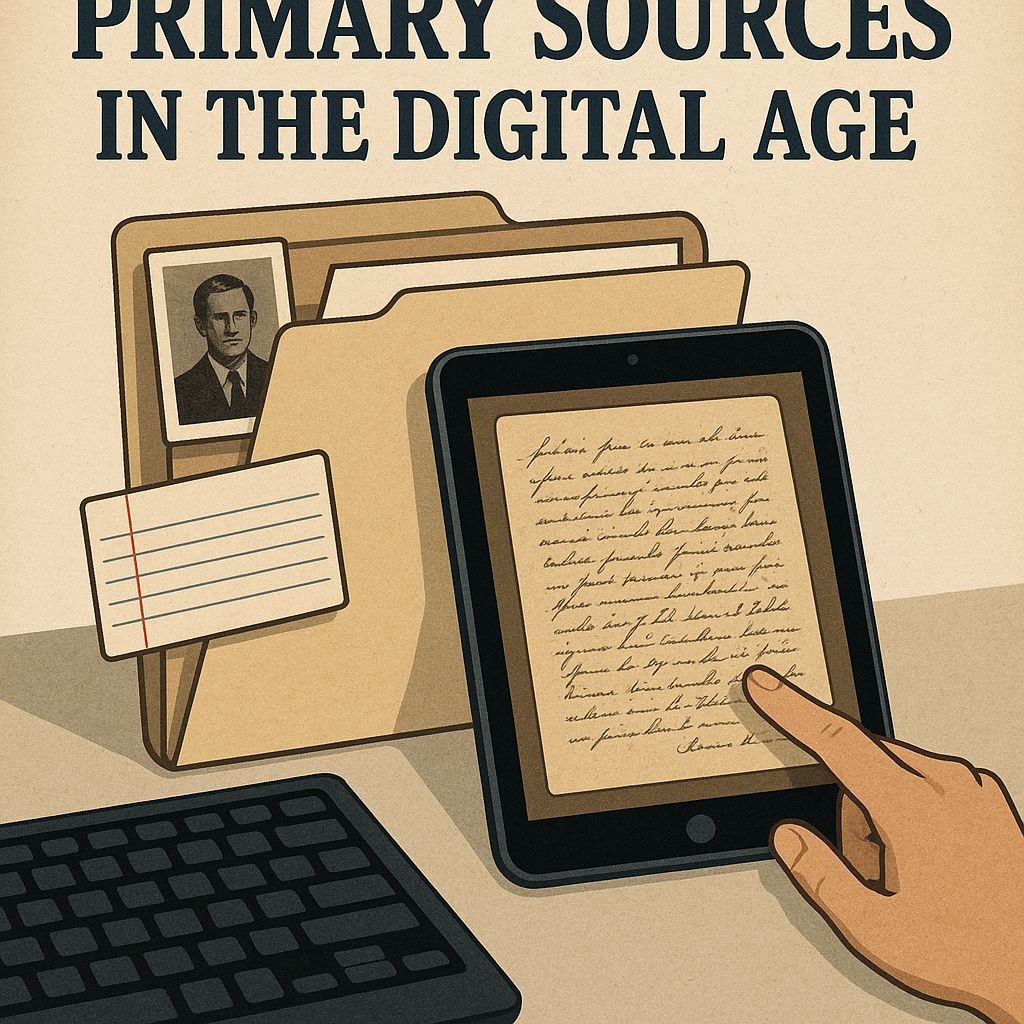
Things have changed not only our lives but also when we do research.
Moreover online resources have greatly expanded our capability to access a array vast of primary sources.
Navigating your online world can be an overwhelming process especially if you’re not sure where to start.
Let’s explore some of these online resources and how you can leverage them for your academic career.
If you know where to look and how to use tools you can enhance your research providing richer insights for your college dissertation research.
The New Path to Primary Source Material
The digitalized libraries have transformed the research academic landscape, offering a accessible path to primary source reference material.
These freely accessible resources can turn tides of your research to work allowing you to buttress your arguments with factual firsthand accounts.
These treasure digital houses are teeming with unique content ranging from historical documents high-resolution composite images of artifacts, academic journals, rare books and much more.
Moreover digital libraries like the Library of Congress, Project Gutenberg and Google Books employing advanced search comprehension algorithms can easily connect you to the most relevant primary sources greatly enhancing the and efficiency of your research collection process.
Unraveling a Wealth of Online Primary Sources
Diving into academic repositories and scholarly articles online uncovers a trove of primary sources for academic research.
Resources Tapping into such as JSTOR, ScienceDirect or Google Scholar you can uncover relevant information that can greatly enhance knowledge, promote credibility and integrity of your academic work.
These platforms online host countless research analysis papers, scientific studies and firsthand accounts from professionals from various disciplines providing students with authentic reliable data for their studies.
The revolution online has not only streamlined access but has also broadened understanding of obtainable primary sources in the agedigital.
Goldmine of Online Primary Evidence
Web archive archiving and digital collections have treasure emerged as troves of primary data opening up a swath vast of resources for academic research and historical investigations.
Understanding how to effectively resolve controversies is key to broadening research scope horizons and enhancing college undergraduate studies making our forays into online research more fruitful.
Whether you’re analyzing social trends through online archives exploring digital libraries for historical manuscripts or scouring academic databases for original journal page entries they offer unparalleled access to authentic data.
Maximize Efficiency in Locating Online Primary Sources
Mastering the skill of online research is pivotal for accessing scholarly primary sources.
With the digital world offering a goldmine of information, effective search strategies can amplify your ability to locate and utilize primary sources rapidly and accurately.
Search engine mastery, knowledge of reliable databases and academic journals, and honing Boolean operators all come into play in online search efficiency.
Also, understanding the importance of keywords and skillful implementation can elevate your search efforts, leading to a more focused and productive collection of sources.
A good practice for students and academic professionals is exploring databases like PubMed Central, where they can access a broad range of free, reputable, and peer-reviewed articles.
Learning to navigate these resources efficiently can considerably enhance your academic research, offering rich, primary resources for your college studies.
Top Strategies for Locating Primary Sources
Finding trustworthy information can often be nations challenging in where deception are common.
But how does one obtain these primary sources? When conducting academic research secondary sources are an tool important for obtaining original authentic data.
This will reveal some strategies top for hunting down and identifying primary contributors in various fields helping us produce research that is not only original but also reliable.
Navigating Library Catalogs for Primary Sources
Clearly navigating library content catalogs, both offline is a highly effective method in uncovering relevant primary sources for your research.
It’s important to be proficient in card catalog systems and online library database search tools, as well as to understand how materials are properly categorized—whether by subject matter, author, copyright, or time period.
These collections vast house priceless libraries of historical documents unpublished transcripts of interviews and other original pieces of literature that can substantially enhance that of your academic work.
This approach granular to library quality research ensures that you use the spectrum full of readily available resources for more comprehensive and fact-based research.
Invaluable Resource for Primary Materials
With advancements of modern technology forensic researchers have a tool powerful at their disposal: online databases.
Tools like JSTOR, EBSCO and ProQuest host vast portfolios of scholarly articles, text books and other primary sources offering a resource rich for academic exploration.
Treasure serving as troves of primary materials these streamline access to collections of information from historical archives to scientific journals.
Harnessing these databases online not only facilitates fact-driven checking but also advances comprehensive research equipping scholars with opportunity to delve deeper into their subject matter and substantiate their points with authentic original evidence.
The Importance of Networking in Academic Research for Primary Information
For academic research informal networking holds a role vital in unearthing primary knowledge.
This can often lead to access to previously undocumented primary sources.
Participating in conferences, workshops, and seminars not only broadens your understanding of your research field but also provides opportunities to collaborate with fellow researchers.
Furthermore fostering professional relationships and your networking within scientific community can significantly aid your hunt for credible primary sources taking your research to a plane higher of authenticity.
Sometimes face-to-face technical discussions can reveal databases, physical databases, gene collections or experimental data unavailable to participants.
Ethnography and Interviews
Primary sources can be brought to life through direct engagement in the field, like through ethnographic studies and interviews.
Herein, the researcher directly interacts with participants, enabling them to access raw, unfiltered information from the individuals who have experienced the phenomenon firsthand.
Ethnography, as a research method, involves an in-depth investigation of a culture or social group from an insider’s perspective, extracting richly contextual and intimately personal primary data.
Interviews, on the other hand, are an effective approach to capture the experiences and perspectives of individuals directly involved in the event or topic being studied.
For those exploring history or anthropology, ethnographic methods and oral histories hold the key to unearthing authentic primary evidence.
To gain a deeper understanding of the differences and utilities of these field methods, you may visit this comparative study of ethnography and oral history.
It’s essential to remember that the fieldwork strategy chosen should optimize accuracy, credibility, and thoroughness of the data collected for your academic research.
The Art of Crafting Convincing Academic Essays
Writing with primary sources is critical to generating well-grounded compelling academic essays.
Utilizing them effectively will make your arguments more persuasive and your reasoning more robust.
These firsthand accounts of events allow for a more credible and in-depth analytical understanding of my research doctoral project.
It is one that requires practice but once honed can greatly enhance mastery of your academic writing.
How to Effectively Incorporate Primary Sources in Your Writing
Clearly incorporating primary sources into your academic papers entails much more than mere citation.
That is to seamlessly weave these historical documents authentic eyewitness testimony accounts or raw scientific data into your narrative.
Tactful navigation through the of direct evidence requires appreciation of it ‘s context and its relevance to your research.
This enhances understanding of your arguments providing solid grounding and enriching the narrative overall structure of your academic essay.
By carefully interpreting these elements foundational you transform your writing into a dialogue vibrant between worlds.
Critically Interpreting Primary Sources in Academic Essays
When engaging in academic writing understanding the underlying analysis is crucial particularly when interpreting primary sources.
This involves critically examining the -hand historical record or raw data, discerning context establishing validity and potential bias in historical documents or statistical data and extracting valuable insights to support your academic investigation.
Sophisticated analysis not only strengthens your claim but provides a understanding deeper of a research or topic.
Likewise obligation to critically interpret primary sources is a competency fundamental in scholarly writing promoting deeply nuanced discussions.
Utilizing critical analysis using techniques biomedical scholars can convert original sources into compelling evidence reinforcing the and quality of their research in academic publications.
Ensuring Credibility when Using Primary Sources
Knowing how to cite primary sources can make a difference big in the of your academic life.
Whether cited ancient manuscripts, historical documentation, statistical data, legal documents or artwork historical citation adhering to standards is essential.
By properly using citation reporting styles like APA, MLA or Chicago style you can ensure that your use of primary sources is transparent and it allows readers to verify authenticity of the.
Moreover managing your archives diligently prevents accusations of plagiarism bolstering your scientific integrity while acknowledging the authors original and their precious contributions to your subject to matter.
Working with lots of quotations, notes, and drafts can get messy fast.
Our Undetectable AI’s Bulk Scan AI Content helps you review multiple passages at once to spot writing that may read too synthetic and to keep your analysis consistent.

Upload several excerpts, literature-review sections, or team drafts in one go and get clear, color-coded results that flag potential AI-like patterns, so your final paper stays human, credible, and aligned with your citations.
Integrating Primary and Secondary Sources for a Comprehensive Essay
An integral aspect of successful academic writing lies in the strategic integration of both primary and secondary sources.
This delicate balance acts as one of the crucial academic writing skills to master for a comprehensive and convincing essay.
Primary and secondary sources contribute in their unique ways; the primary sources offer a direct peek into the original data or first-hand accounts, while secondary sources provide context, analysis, and interpretation.
The key is effectively intertwining these two types of sources to create a well-researched and authentic narrative.
A comprehensive guide on integrating sources can be accessed here.
An astute synthesis of these resources can significantly enrich your thesis, ensuring it is well-evidenced, substantially analogue, and enriched with diverse perspectives.
Remember, the ultimate goal is to create a harmonious amalgamation of first-hand accounts and scholarly commentaries that complement each other and contribute to a well-rounded, academically robust argument.
Make Your Academic Essays More Human with Undetectable AI’s AI Humanizer
If you’re searching for a more natural-sounding style in your academic papers AI-based tools can help.
Along with researching primary sources a writing in that them resonates with is key to producing effective academic pieces.
Among them is Undetectable AI’s AI Humanizer that adds elements of human touch to your writing thus improving readability and boosting reader emotional engagement.
Enhancing Academic Writing Output With Tech Tools
With the growing digitalization of the sector increased adoption of technical tools such as AI assistance for enhancing academic writing academic output is becoming increasingly prevalent.
Leveraging AI-based writing language assistants, for instance Undetectable AI’s AI Humanizer can transform your academic papers making them more coherent, polished and effectively resonating with.
These advanced technologies go beyond basic grammar skills checking, offering features that help with structuring, commenting, improving sentence flow, and increasing overall readability.
These AI tools not only enrich your writing style but also help with efficiently managing your time, cutting down on proofreading hours.
Improving the Readability of Your Essays
Leveraging the of Artificial Intelligence (AI) can revolutionize all of your articles, boosting clarity, promoting coherence and engagement.
These incorporate algorithms that can spot writing reading habits spot grammar and mistakes and complex sentences enhancing readability and eliminating confusing language.
With advanced technology such as AI-based proofreading tools amplifying algorithms you can refine your draft into a highly comprehensible piece.
As such relying on AI will dramatically improve your essay essay writing skills skills making your work more reader-friendly.
They can also guide you to use appropriate research and language properly frame powerful thesis prepared statements and generate solid academic discourse.
The Role of AI in Adding a Human Touch
Mastering the fundamentals of academic writing while implementing advanced technologies such as artificial intelligence (AI) offers substantial benefits—one of which is adding a personal touch to your content.
These intelligent tools can interpret primary sources and craft content that resonates more closely with human communication styles, giving academic publications a unique blend of professionalism and relatability.
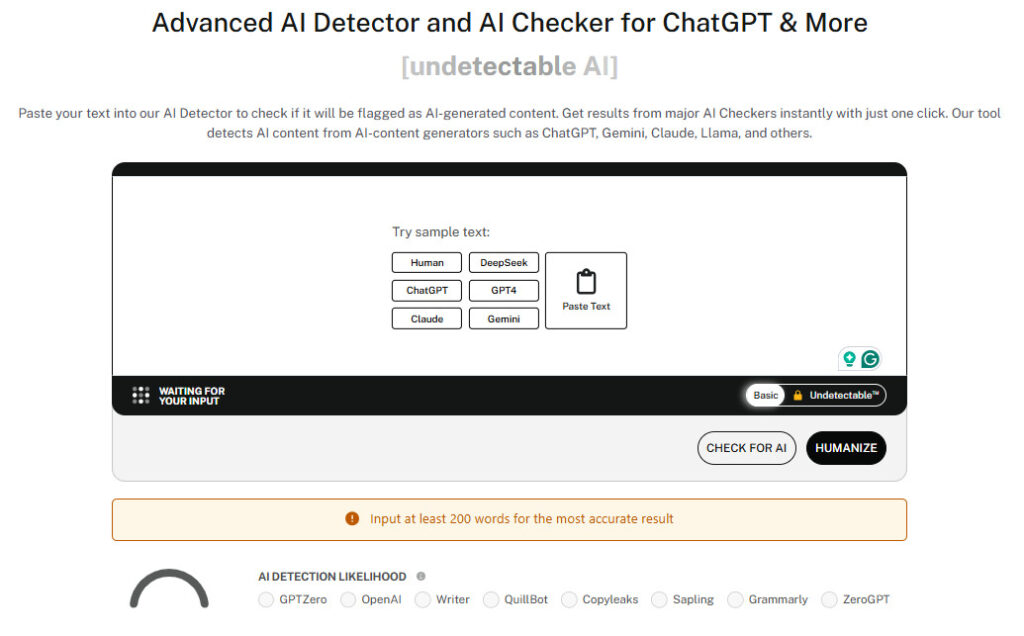
Today’s AI writing and learning tools, like Undetectable AI’s AI Detector and Humanizer, are designed to first identify AI-generated text and then transform it into natural, engaging content that connects better with readers.
By leveraging AI in educational writing, you’re revolutionizing your storytelling style, fostering deeper reader engagement, and giving your content a more authentic, natural feel.
Boosting Reader Engagement with AI Tools
The role of Artificial Intelligence (AI) tools in academic writing processes is growing exponentially.
Revolutionizing the way we write, AI tools can assist students and researchers in enhancing their writing skills and boosting reader engagement.
By providing suggestions for style, tone, and linguistic variations, these tools can help craft an academic essay that’s not only insightful but also compelling to read.
The critical aspect of such tools is their ability to learn and adapt, continuously improving their suggestions to align with the writer’s unique style.
AI furthermore helps eliminate writer’s block, offering ideas and prompts that can inspire creativity and improve productivity.
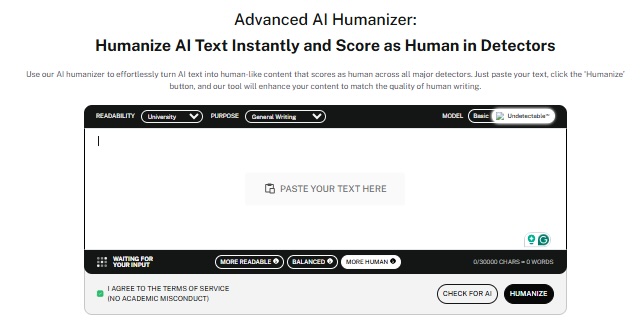
One such invaluable tool is the AI Humanizer from Undetectable AI, which seamlessly humanizes text, making it more relatable and engaging for readers.
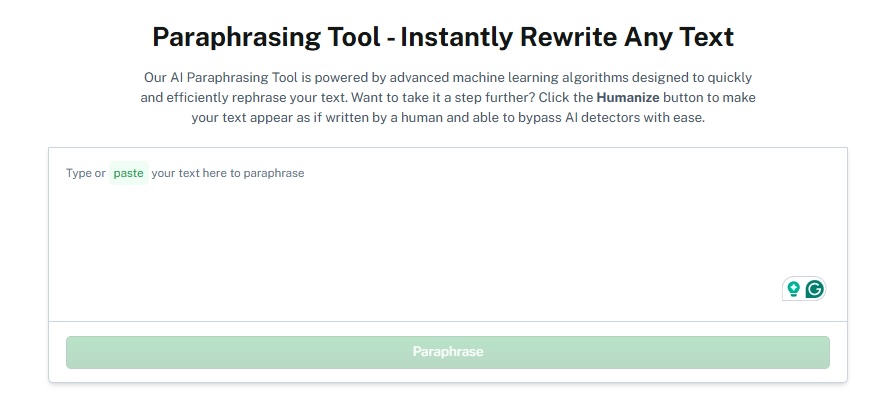
The platform also offers an AI Paraphrasing tool, which helps rewrite content for improved clarity and originality—an essential feature for refining academic essays.
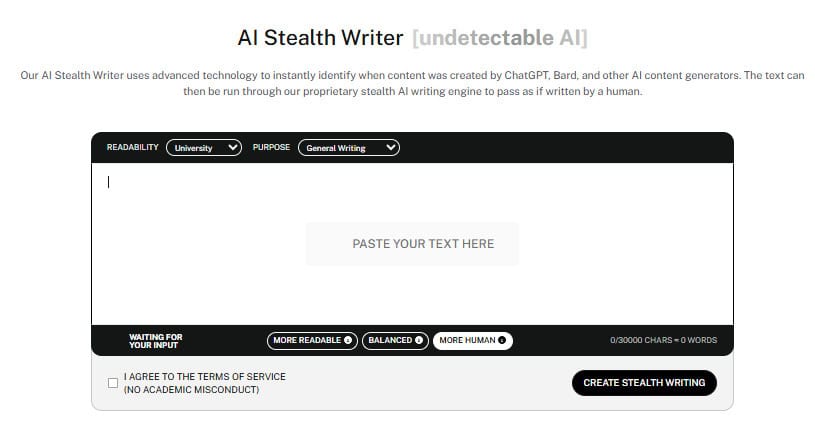
Additionally, the AI Stealth Writer allows users to generate new, undetectable content from scratch, making it a powerful option for drafting authentic work.
Harnessing the power of AI to improve and accelerate your writing process will undoubtedly take your academic essays to new heights.
Tap into the power of smart tools—our AI Detector and Humanizer await in the widget below!
FAQs
What exactly are primary sources?
Primary sources are immediate first-hand witness accounts of that from people who had a connection direct with him.
They are considered the materials raw of history and original records created as the events historical occurred or well after events in the preceding memoirs oral histories and autobiographies.
Why are primary sources important?
External sources are important because they provide a direct window into the subject.
Secondary sources, in turn, can enhance the experience by allowing participants to engage more deeply with what they study.
They offer an look inside into different aspects of life that secondary sources do not include.
What are examples of primary sources?
Primary sources can be anything from personal letters, family diaries, official documents, official speeches and interviews to works of art, folk music, still photographs and sculptures.
They also include research reference papers published in academic journals which are primary sources in the underlying scientific research.
How do I find primary sources for my research?
Writing primary sources should depend subject on your matter. In biomedical research academic journal ed databases are often the stop first.
During historical research, scholarly libraries, historic archives, historical museums and historical societies can be great places to find primary materials.
Furthermore, increasingly, many primary sources are being digitized and can be found here.
How can I tell if a source is primary or secondary?
Historically speaking a source primary is an work original not interpretation of something.
On the other hand secondary sources analyze, systematically interpret, examine or summarize texts from primary sources.
If it offers direct empirical evidence about something it’s a primary source.
So, for instance a manuscript presenting new findings is a primary source while a paper that interprets other researcher’s work is a secondary source.
How can Undetectable AI’s AI Humanizer make my academic essays appear more human?
Undetectable AI’s AI Humanizer is built to offer a touch personal in writing. It intuitively understands all of nature thus giving it a more natural tone.
It uses artificial intelligence to make your text read as if a read it enhancing readability.
This will make your writing stand out engage your audience better and provide an reading improved experience.
What types of writing can be enhanced with the AI Humanizer from Undetectable AI?
Nearly any given text can be improved by using Undetectable AI’s AI Humanizer.
It can be used to make your text appear more human-written by adding some language natural nuances that simply it typing on might not capture.
It includes academic research, papers, keynote lectures, research reports and articles.
This can help you communicate your academic findings in a format feels more engaging to your readers.
Is using an AI tool like Undetectable AI’s AI Humanizer considered plagiarism?
No use Undetectable AI’s AI Humanizer isn’t considering plagiarism.
It simply adds a touch personal to your own work enhancing your pre-recorded content by making it sound more natural.
Reddit doesn’t create content on its own or reuse any existing already content.
Always remember what you input for the AI Humanizer to work with should be original to you.
Conclusion
Secondary sources are essential for credible, well-rounded research—but pairing them with well-chosen primary sources takes your academic writing to the next level.
And once your research is complete, how you present it matters just as much.
Use Undetectable AI’s Humanizer to polish your work and make it sound natural, clear, and engaging—without raising red flags.
Elevate your writing. Impress your readers. Try Undetectable AI today.
